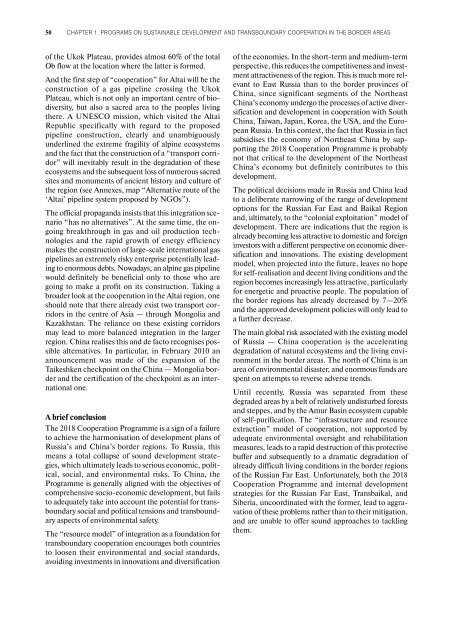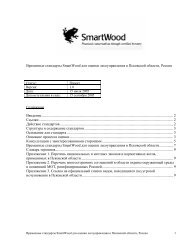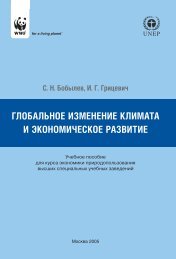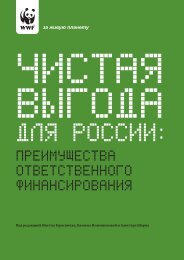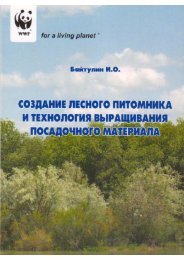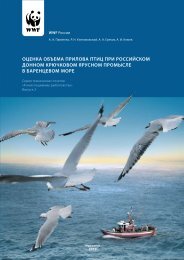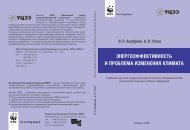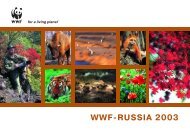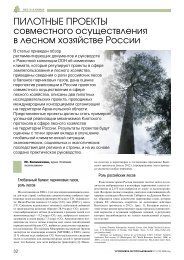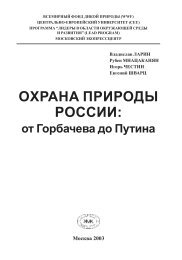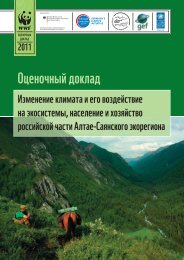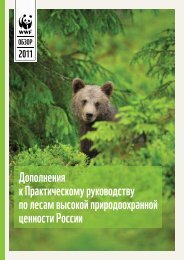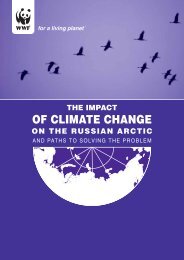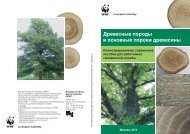to sino- russian
to sino- russian
to sino- russian
Create successful ePaper yourself
Turn your PDF publications into a flip-book with our unique Google optimized e-Paper software.
50 CHAPTER 1. PROGRAMS ON SUSTAINABLE DEVELOPMENT AND TRANSBOUNDARY COOPERATION IN THE BORDER AREAS<br />
of the Ukok Plateau, provides almost 60% of the <strong>to</strong>tal<br />
Ob flow at the location where the latter is formed.<br />
And the first step of “cooperation” for Altai will be the<br />
construction of a gas pipeline crossing the Ukok<br />
Plateau, which is not only an important centre of biodiversity,<br />
but also a sacred area <strong>to</strong> the peoples living<br />
there. A UNESCO mission, which visited the Altai<br />
Republic specifically with regard <strong>to</strong> the proposed<br />
pipeline construction, clearly and unambiguously<br />
underlined the extreme fragility of alpine ecosystems<br />
and the fact that the construction of a “transport corridor”<br />
will inevitably result in the degradation of these<br />
ecosystems and the subsequent loss of numerous sacred<br />
sites and monuments of ancient his<strong>to</strong>ry and culture of<br />
the region (see Annexes, map “Alternative route of the<br />
‘Altai’ pipeline system proposed by NGOs”).<br />
The official propaganda insists that this integration scenario<br />
“has no alternatives”. At the same time, the ongoing<br />
breakthrough in gas and oil production technologies<br />
and the rapid growth of energy efficiency<br />
makes the construction of large-scale international gas<br />
pipelines an extremely risky enterprise potentially leading<br />
<strong>to</strong> enormous debts. Nowadays, an alpine gas pipeline<br />
would definitely be beneficial only <strong>to</strong> those who are<br />
going <strong>to</strong> make a profit on its construction. Taking a<br />
broader look at the cooperation in the Altai region, one<br />
should note that there already exist two transport corridors<br />
in the centre of Asia — through Mongolia and<br />
Kazakhstan. The reliance on these existing corridors<br />
may lead <strong>to</strong> more balanced integration in the larger<br />
region. China realises this and de fac<strong>to</strong> recognises possible<br />
alternatives. In particular, in February 2010 an<br />
announcement was made of the expansion of the<br />
Taikeshken checkpoint on the China — Mongolia border<br />
and the certification of the checkpoint as an international<br />
one.<br />
A brief conclusion<br />
The 2018 Cooperation Programme is a sign of a failure<br />
<strong>to</strong> achieve the harmonisation of development plans of<br />
Russia’s and China’s border regions. To Russia, this<br />
means a <strong>to</strong>tal collapse of sound development strategies,<br />
which ultimately leads <strong>to</strong> serious economic, political,<br />
social, and environmental risks. To China, the<br />
Programme is generally aligned with the objectives of<br />
comprehensive socio-economic development, but fails<br />
<strong>to</strong> adequately take in<strong>to</strong> account the potential for transboundary<br />
social and political tensions and transboundary<br />
aspects of environmental safety.<br />
The “resource model” of integration as a foundation for<br />
transboundary cooperation encourages both countries<br />
<strong>to</strong> loosen their environmental and social standards,<br />
avoiding investments in innovations and diversification<br />
of the economies. In the short-term and medium-term<br />
perspective, this reduces the competitiveness and investment<br />
attractiveness of the region. This is much more relevant<br />
<strong>to</strong> East Russia than <strong>to</strong> the border provinces of<br />
China, since significant segments of the Northeast<br />
China’s economy undergo the processes of active diversification<br />
and development in cooperation with South<br />
China, Taiwan, Japan, Korea, the USA, and the European<br />
Russia. In this context, the fact that Russia in fact<br />
subsidises the economy of Northeast China by supporting<br />
the 2018 Cooperation Programme is probably<br />
not that critical <strong>to</strong> the development of the Northeast<br />
China’s economy but definitely contributes <strong>to</strong> this<br />
development.<br />
The political decisions made in Russia and China lead<br />
<strong>to</strong> a deliberate narrowing of the range of development<br />
options for the Russian Far East and Baikal Region<br />
and, ultimately, <strong>to</strong> the “colonial exploitation” model of<br />
development. There are indications that the region is<br />
already becoming less attractive <strong>to</strong> domestic and foreign<br />
inves<strong>to</strong>rs with a different perspective on economic diversification<br />
and innovations. The existing development<br />
model, when projected in<strong>to</strong> the future, leaves no hope<br />
for self-realisation and decent living conditions and the<br />
region becomes increasingly less attractive, particularly<br />
for energetic and proactive people. The population of<br />
the border regions has already decreased by 7—20%<br />
and the approved development policies will only lead <strong>to</strong><br />
a further decrease.<br />
The main global risk associated with the existing model<br />
of Russia — China cooperation is the accelerating<br />
degradation of natural ecosystems and the living environment<br />
in the border areas. The north of China is an<br />
area of environmental disaster, and enormous funds are<br />
spent on attempts <strong>to</strong> reverse adverse trends.<br />
Until recently, Russia was separated from these<br />
degraded areas by a belt of relatively undisturbed forests<br />
and steppes, and by the Amur Basin ecosystem capable<br />
of self-purification. The “infrastructure and resource<br />
extraction” model of cooperation, not supported by<br />
adequate environmental oversight and rehabilitation<br />
measures, leads <strong>to</strong> a rapid destruction of this protective<br />
buffer and subsequently <strong>to</strong> a dramatic degradation of<br />
already difficult living conditions in the border regions<br />
of the Russian Far East. Unfortunately, both the 2018<br />
Cooperation Programme and internal development<br />
strategies for the Russian Far East, Transbaikal, and<br />
Siberia, uncoordinated with the former, lead <strong>to</strong> aggravation<br />
of these problems rather than <strong>to</strong> their mitigation,<br />
and are unable <strong>to</strong> offer sound approaches <strong>to</strong> tackling<br />
them.


